#Bucorvus abyssinicus
Explore tagged Tumblr posts
Text

Hornrabe, Bucorax abyssinicus | Die Vögel (1913) | Alfred Edmund Brehm (1829-1884) | Biodiversity Heritage Library
3 notes
·
View notes
Photo

[11/10,976] Abyssinian ground hornbill - Bucorvus abyssinicus
Order: Bucerotiformes Family: Bucorvidae (ground hornbills)
Photo credit: Stephen Davies via Macaulay Library
101 notes
·
View notes
Text



Abyssinian ground hornbill - bucorvus abyssinicus
📍North and Central Africa
🌡️ Vulnerable
1 note
·
View note
Text




baby abyssinian ground hornbill growth stages from sacramento zoo
2K notes
·
View notes
Text
Bucorvus
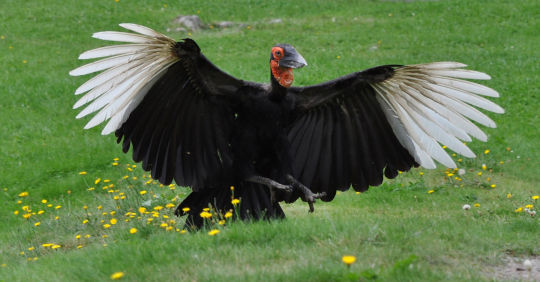
Southern Ground Hornbill by Neil McIntosh, CC BY 2.0
Etymology: Hornbill Crow
First Described By: Lesson, 1830
Classification: Dinosauromorpha, Dinosauriformes, Dracohors, Dinosauria, Saurischia, Eusaurischia, Theropoda, Neotheropoda, Averostra, Tetanurae, Orionides, Avetheropoda, Coelurosauria, Tyrannoraptora, Maniraptoromorpha, Maniraptoriformes, Maniraptora, Pennaraptora, Paraves, Eumaniraptora, Averaptora, Avialae, Euavialae, Avebrevicauda, Pygostaylia, Ornithothoraces, Euornithes, Ornithuromorpha, Ornithurae, Neornithes, Neognathae, Neoaves, Inopinaves, Telluraves, Afroaves, Coraciimorphae, Cavitaves, Eucavitaves, Picocoraciae, Bucerotiformes, Buceroti, Bucorvidae
Referred Species: B. brailloni, B. leadbeateri (Southern Ground Hornbill), B. abyssinicus (Abyssinian/Northern Ground Hornbill)
Status: Extinct - Extant, Vulnerable
Time and Place: From about 12 million years ago, in the Serravallian of the Miocene, through today


Ground Hornbills are known from across the entire African continent

Physical Description: Ground Hornbills are truly impressive living dinosaurs, large in body and bulky in form. They can reach up to 100 centimeters in length, weighing as much as 6 kilograms. They are black over most of their bodies (leading to their being named for crows and ravens, which they are not closely related to at all), with grey legs and grey bills. They also have grey crests on the tops of their heads. Their heads feature bright coloration which is distinguished from the rest of the body - red patches, blue patches, yellow bits, and wattles, which vary from species to species. The undersides of their wings are white, and they have short and thin tails. Called hornbills for their very large, pointed beaks, these bills make up a major chunk of their heads. They also, interestingly enough, have eyelashes on their eyes to aid in protecting them. The juveniles are somewhat brown, and they become more black in color as they age.
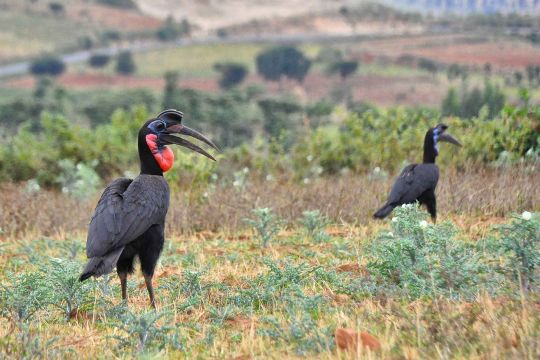
Northern Ground Hornbills by Rod Waddington, CC BY-SA 2.0
Diet: Ground Hornbills primarily feed upon arthropods such as insects, spiders, and scorpions. They also feed upon other invertebrates like snails, and larger prey such as snakes, lizards, small mammals, and carrion. Though they have been recorded feeding upon berries, they are primarily carnivorous.
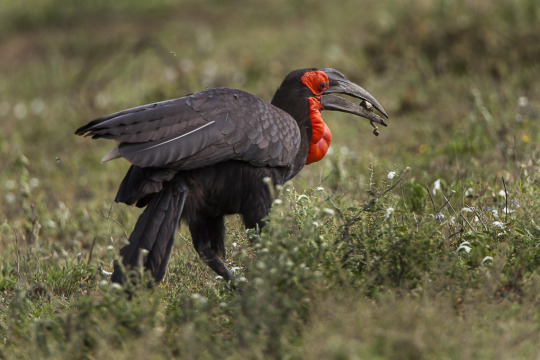
Southern Ground Hornbill by Francesco Veronesi, CC BY-SA 2.0
Behavior: Ground Hornbills are extremely fascinating creatures, able to fly but spending most of their time on the ground searching for sources of food. They will move slowly and carefully, searching around for prey that then is picked up with their large bill, very carefully and in a picky fashion from the ground. They forage in small groups - with a mate, or with their offspring. They rarely gather in large groups, usually only when food is especially abundant. They’ll even dig into the ground or poop looking for food. When large prey is found, groups will gather and attack it together, dismembering it as a team. These are extremely vocal birds, making low-pitched hoots at each other often at two different pitches. They will make softer hoots when snuggling with each other, and deep alarm grunts. They are often known to call for long periods of time. They do not migrate, but do wander about; juveniles will stay where their parents lived for many years.
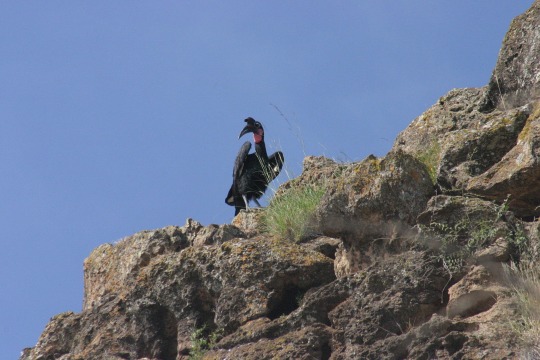
Northern Ground Hornbill by Sakari A. Maaranen, CC BY 3.0
The Ground Hornbills are cooperative breeders - the dominant pair will be assisted by juvenile and younger adult helpers, all defending the nesting territory fiercely. Males will prepare their nests in large tree cavities, sometimes in rock holes or baskets - they will line the hole with dry leaves, and not seal the entrance. Two to three eggs are laid and incubated for two months by the dominant female of the group. Upon hatching, the group members will feed the babies together, but usually the second or third eggs don’t survive - either the eggs don’t hatch, or the chicks starve to death. The chicks stay in the nest for three more months, and the juveniles stick with their families for a little while after hatching. They tend to reach sexual maturity between six and seven, but they don’t usually breed for the first time until later. They also tend to breed only once every three years - a rarity for birds. The birds can live for a very long time - in captivity, they’ve been seen living for up to 40 years.
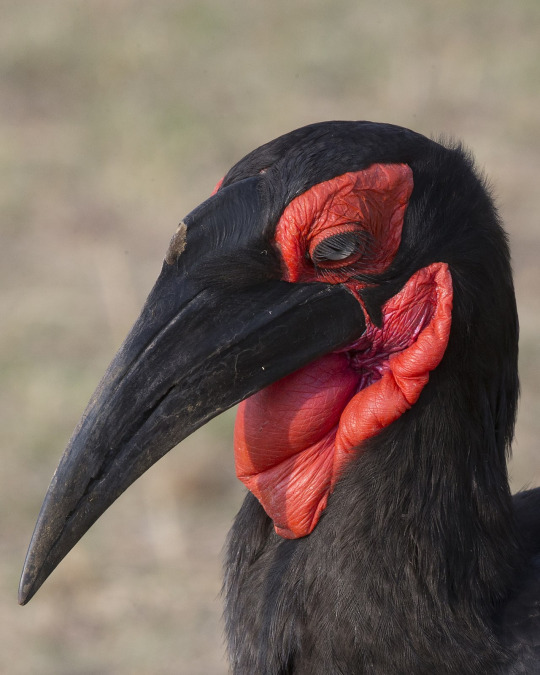
Southern Ground Hornbill by Lip Kee, CC BY-SA 2.0
Ecosystem: Ground Hornbills live in a variety of habitats, across woodland and savanna, as well as grassland patches. The Southern Ground Hornbills live in more moist habitats than the Northern Ground Hornbills. They are often fed upon by large carnivores such as leopards, and can be a host for a wide variety of parasites and diseases.

Northern Ground Hornbill by Bernard Dupont, CC BY-SA 2.0
Other: All living Ground Hornbills are recorded as being vulnerable to extinction at this time. Despite being extremely widespread, they are sparse across their range. This sparseness makes it harder for them to find others of their species and mate with them. They are often hunted and killed, or even murdered as a bringer of bad luck in some cultures. Ground Hornbills also break window panes and are killed for that, in addition to being killed for being a harbinger of drought. Habitat loss also greatly contributes to their decline in population. They do live in several national parks, and there are conservation efforts to aid in its reproduction, using the abandoned eggs to raise more of the birds. Reintroduction, however, is more difficult than anticipated.
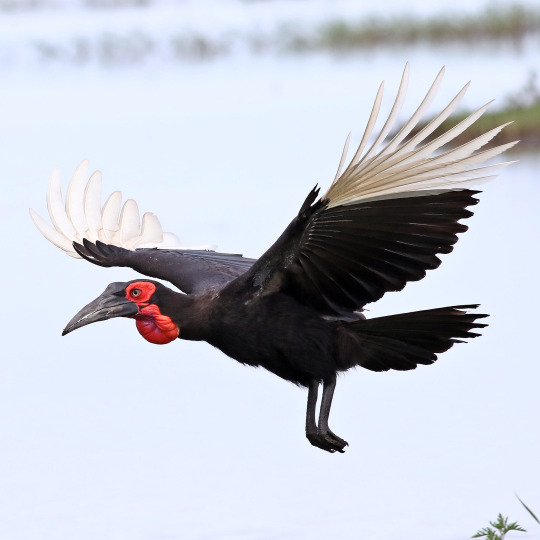
Southern Ground Hornbill by Derek Keats, CC BY 2.0
Species Differences: The Northern Ground-Hornbill is known from Central Africa, and features blue patches on its face with a yellow bit in the front. Males have red additions to their throat wattles. The Southern Ground-Hornbill, on the other hand, is all red, with no yellow or blue to be found. They are also found in southern Africa. In addition to all of this, the Northern Ground-Hornbill is somewhat lighter in weight than the Southern Ground-Hornbill. The extinct species, B. brailloni, was from much more north - in Morocco - and was much older, as well as a little smaller, than its living relatives.

Northern Ground Hornbill by Noel Reynolds, CC BY 2.0
~ By Meig Dickson
Sources under the Cut
Gill, Frank; Donsker, David, eds. (2019). "Mousebirds, Cuckoo Roller, trogons, hoopoes, hornbills". World Bird List Version 9.2. International Ornithologists' Union. Retrieved 23 July 2019.
Gonzalez, J.-C.T.; Sheldon, B.C.; Collar, N.J.; Tobias, J.A. (2013). "A comprehensive molecular phylogeny for the hornbills (Aves: Bucerotidae)". Molecular Phylogenetics and Evolution. 67 (2): 468–483.
Jobling, James A. (2010). The Helm Dictionary of Scientific Bird Names. London: Christopher Helm. p. 80.
Kemp, A. C. 1995. The Hornbills. Oxford University Press, Oxford.
Kemp, A.C. & Boesman, P. (2019). Northern Ground-hornbill (Bucorvus abyssinicus). In: del Hoyo, J., Elliott, A., Sargatal, J., Christie, D.A. & de Juana, E. (eds.). Handbook of the Birds of the World Alive. Lynx Edicions, Barcelona.
Kemp, A.C. & Boesman, P. (2019). Southern Ground-hornbill (Bucorvus leadbeateri). In: del Hoyo, J., Elliott, A., Sargatal, J., Christie, D.A. & de Juana, E. (eds.). Handbook of the Birds of the World Alive. Lynx Edicions, Barcelona.
Kinnaird Margaret F. and O‘Brien, Timothy G.; The Ecology and Conservation of Asian Hornbills: Farmers of the Forest; pp. 20-23.
Lesson, René (1830). Traité d'Ornithologie, ou Tableau Méthodique (in French). Paris: F.G. Levrault. p. 256
Peters, James Lee, ed. (1945). Check-list of Birds of the World. Volume 5. Cambridge, Massachusetts: Harvard University Press. p. 272.
Skutch; Alexander Frank (author) and Gardner, Dana (illustrator) Helpers at birds' nests : a worldwide survey of cooperative breeding and related behavior pp. 69-71. Published 1987 by University of Iowa Press.
Wasser, D. E. and Sherman, P.W.; “Avian longevities and their interpretation under evolutionary theories of senescence” in Journal of Zoology 2 November 2009
#Bucorvus#Ground Hornbill#Bird#Dinosaur#Hornbill#Birblr#Factfile#Bucorvus brailloni#Bucorvus leadbeateri#Bucorvus abyssinicus#Southern Ground Hornbill#Palaeoblr#Abyssinian Ground Hornbill#Northern Ground Hornbill#Afroavian#Terrestrial Tuesday#Carnivore#Africa#Quaternary#Neogene#paleontology#prehistory#prehistoric life#dinosaurs#biology#a dinosaur a day#a-dinosaur-a-day#dinosaur of the day#dinosaur-of-the-day#science
120 notes
·
View notes
Photo

Bucorvus abyssinicus by odileva
1 note
·
View note
Photo
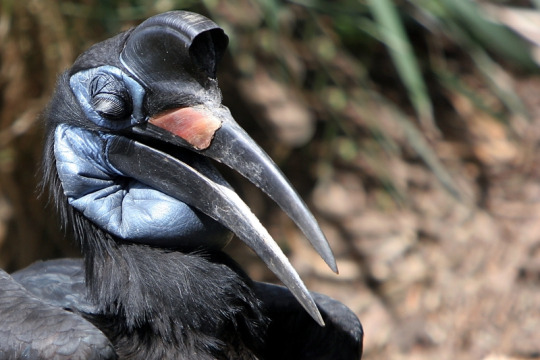
A new variant has been added!
Abyssinian Ground Hornbill (Bucorvus abyssinicus) © Jerry Thompson
It hatches from agricultural, bare, blue, deep, facial, huge, large, little, red, similar, small, southern, and white eggs.
squawkoverflow - the ultimate bird collecting game 🥚 hatch ❤️ collect 🤝 connect
1 note
·
View note
Photo

Abyssinian Ground Hornbill, Bucorvus abyssinicus, female
412 notes
·
View notes
Photo






A Mighty-billed Feathursday
This week we bring you wood engravings of some supremely-beaked toucans and hornbills from Part 2, Volume 2 of Brehms Thierleben (1882). Most of these illustrations were drawn by German nature artist Robert Kretschmer and engraved by Richard Illner, while two (the Black-necked Aracari and the Abyssinian Ground Hornbill ) were drawn by the noted German wildlife artist Gustav Mützel and engraved by Karl Jahrmargt.
While both toucans and hornbills sport magnificent, outsized, and often colorful beaks, hornbills are an Old World group unrelated to the toucans of the New World. While the stronghold of the toucans is in Central and South America, hornbills are found in sub-Saharan Africa and Asia, with a single species in New Guinea. Hornbills make up the Bucerotidae family in the order Bucerotiformes and are related to hoopoes. Toucans form the Ramphastidae family, in the order Piciformes and are more related to woodpeckers. Shown here from top to bottom:
1.) Common Toucan (Ramphastos toco). 2.) Black-necked Aracari (Pteroglossus aracari). 3.) Northern Red-billed Hornbill (Tockus erythrorhynchus). 4.) Blyth's Hornbill (Rhyticeros plicatus). 5.) Abyssinian Ground Hornbill (Bucorvus abyssinicus). 6.) Great Hornbill (Buceros bicornis).
Find out more about Brehms Thierleben.
View more posts from Brehms Thierleben.
View more Feathursday posts.
#Feathursday#toucans#hornbills#Common Toucan#Black-necked Aracari#Northern Red-billed Hornbill#Blyth's Hornbill#Abyssinian Ground Hornbill#Great Hornbill#Brehms Thierleben#wood engravings#Robert Kretschmer#Richard Illner#Gustav Mützel#Karl Jahrmargt#Bucerotiformes#Bucerotidae#Piciformes#Ramphastidae#birds#birbs!
75 notes
·
View notes
Photo

(Note: I am not a professional paleontologist or even biologist. I am just and amateur paleoartist and enthusiast. If my infos are off in some way, feel free to correct them ^^)
-
DINOCEMBER
14 (Front) - Santanaraptor placidus (from the Latin "Thief of Santana") 15 (Back) - Aratasaurus museunacionali (combination of Tupi "ara" and "atá" and Greek "sauros" as "lizard born from fire") - Early Cretaceous (112-108 Ma BCE) - Romulado Formation, Ceara, Brazil Probably one of the most famous Brazilian dinosaurs, the Santanaraptor is a member of the tyrannosauroid family, presenting more basal characteristics similar to the Asian Guanlong and Dilong, with long legs adapted for running, a trait common to most theropods of this lineage at the beginning of their walk to become massive predators, in the future using their powerful skulls and jaws as their main hunting weapon. The original Santanaraptor fossil, formally named in 1996, mainly featured the animal's back and legs, as well as soft tissue prints, such as muscle fibers and parts of the epidermis, with an estimated size for an adult individual at just under 2 meters, close the size of a velociraptor. Also present on the great coastal plain at the same time as the Santanaraptor, the Aratasaurus was formally named in 2020, with its specific name honoring the National Museum of Brazil, unfortunately destroyed by the flames in 2018 resulting from years of neglect. The classification of Aratasaurus is still unclear, but it seems that it would also be a Coelurosaur, as well as Santanaraptor, part of the lineage that include birds and the most famous theropods, such as dromaeosaurs, tyrannosaurs and ornithomimosaurs. Aratasaurus seems to be more robust than Santanaraptor, about 3 meters long. I imagine that the two species would encouter themselves in life, like Aratasaurus perhaps acting similarly to a large spotted hyena while the agile Santanaraptor would be something like a coati or a mongoose, more of a opportunistic hunter.
- Color schemes based on a Northern Ground Hornbill (Bucorvus abyssinicus) for the Aratasaurus and a Madagascan Serpent Eagle (Eutriorchis astur) for the Santanaraptor.
#Araripe Basin#Romulado Formation#Brazil#dinocember#dinocember2020#santanaraptor#aratasaurus#aratasaurus museunacionali#Coelurosauria#brazilian dinosaurs#theropod#Tyrannosauroidea#saurischia#paleobiology#paleontology#paleoart#paleoillustration#Science illustration#sciart#cretaceous#south america#raptor#creature art#creature design#creature concept#Digital Artists#digital drawing#digital art#artists on tumblr
6 notes
·
View notes
Photo

ABYSSINIAN GROUND HORNBILL Bucorvus abyssinicus ©Laura Quick The Abyssinian ground hornbill or northern ground hornbill is an African bird, found north of the equator. There are two species of ground hornbill. Together they are the largest species of hornbills found in Africa.
Diurnal Abyssinian ground hornbills invest a lot in their offspring and the fledged juveniles will remain with their parents for up to three years. They have a slow breeding rate and an average of one chick is raised to adulthood every 9 years.
#abyssiniangroundhornbill#hornbill#bucorvusabyssinicus#©lauraquick#bird#animal#birds of tumblr#snakekiller#losangeleszooandbotanicalgardens#lazoo#losangeleszoo#glaza#africa#north of the equator#bucerotiformes#bucorvidae#ethiopia#eretria
15 notes
·
View notes
Photo




Northern Ground Hornbill (female), Bucorvus abyssinicus
6 notes
·
View notes
Photo

ABYSSINIAN GROUND HORNBILL wrassling a rubber coral snake Bucorvus abyssinicus ©Laura Quick The Abyssinian ground hornbill or northern ground hornbill is an African bird, found north of the equator, and is one of two species of ground hornbill. The two are the largest species of hornbills found in Africa. The Abyssinian ground hornbill has long feathers that look like eyelashes that surround its eyes. These protect the eyes from injury, and blowing dust or sand. In captivity, they can live up to 35–40 years. Diet in the wild consists of a wide variety of small vertebrates and invertebrates, including tortoises, lizards, snakes, birds, spiders, beetles, and caterpillars; they also take carrion, some fruits, seeds, and groundnuts. It is currently thought that the ground hornbills, are almost exclusively carnivorous and lack the gular pouch that allows other, less closely related hornbills to store fruit. Groups of ground hornbills have territories of 2–100 square miles (5.2–259.0 km2). They are diurnal. Abyssinian ground hornbills invest a lot in their offspring and the fledged juveniles will remain with their parents for up to three years. They have a slow breeding rate and an average of one chick is raised to adulthood every 9 years so the adults' investment in each young bird raised is exceptionally high. #abyssiniangroundhornbill #hornbill #bucorvusabyssinicus #©lauraquick #bird #animal #birdsofinstagram #snakekiller #losangeleszooandbotanicalgardens #lazoo #losangeleszoo #glaza #africa #northofequator #bucerotiformes #bucorvidae https://www.instagram.com/p/B8u-ak2nKqq/?igshid=cxfrlk8rial5
#abyssiniangroundhornbill#hornbill#bucorvusabyssinicus#©lauraquick#bird#animal#birdsofinstagram#snakekiller#losangeleszooandbotanicalgardens#lazoo#losangeleszoo#glaza#africa#northofequator#bucerotiformes#bucorvidae
3 notes
·
View notes
Video
Southern Ground Hornbill, Maasai Mara by Ray in Manila Via Flickr: The southern ground hornbill (Bucorvus leadbeateri; formerly known as Bucorvus cafer), is one of two species of ground hornbill and is the largest species of hornbill. The other species of the genus Bucorvus is the Abyssinian ground hornbill, B. abyssinicus. The southern ground hornbill is characterized by black coloration and vivid red patches of bare skin on the face and throat (yellow in juvenile birds), which are generally believed to keep dust out of the birds eyes while they forage during the dry season. The white tips of the wings (primary feathers) seen in flight are another diagnostic characteristic. The beak is black and straight and presents a casque, more developed in males. Female southern ground hornbills are smaller and have violet-blue skin on their throats. Juveniles to six years old lack the prominent red pouch, but have a duller patch of grey in its place. Southern ground hornbills can be found from northern Namibia and Angola to northern South Africa and southern Zimbabwe to Burundi and Kenya. And Hawaii as they have escaped the Honolulu Zoo. They require a savanna habitat with large trees for nesting and dense but short grass for foraging. The southern ground hornbill is a vulnerable species, mainly confined to national reserves and national parks. They live in groups of 5 to 10 individuals including adults and juveniles. Often, neighbouring groups are engaged in aerial pursuits. They forage on the ground, where they feed on reptiles, frogs, snails, insects and mammals up to the size of hares. Southern ground hornbills very rarely drink: their range is limited at its western end by the lack of trees in which to build nests. Southern ground hornbill groups are very vocal: contact is made by calls in chorus which can usually be heard at distances of up to 3 kilometres (1.86 mi). The calls allow each group to maintain its territories, which must be as large as 100 square kilometres (40 sq mi) even in the best habitat. They are among the longest-lived of all birds, and the larger southern species is possibly the slowest-breeding (triennially) and longest-lived of all birds. en.wikipedia.org/wiki/Southern_ground_hornbill
#Kenya#Maasai Mara#Africa#Birds#bird#bird of prey#Animal#colourful#EOS 650D#EF-S55-250mm#Fauna#grass#Green#nature#National Park#natural world#Equator#wildlife#Wild#exotic#beak#head#portrait#eye#red#hornbill#southern ground hornbill#Safari#Savanna#Animalia
1 note
·
View note
Photo

And here’s the conclusion of my hornbill series. I hope it was enjoyable. This is the Abyssinian Ground-Hornbill (Bucorvus abyssinicus) at the San Diego Zoo Safari Park. #hornbills https://www.instagram.com/p/Ce_LQevAP38/?igshid=NGJjMDIxMWI=
0 notes
Photo

A new variant has been added!
Abyssinian Ground Hornbill (Bucorvus abyssinicus) © russellstreet
It hatches from agricultural, bare, blue, deep, facial, huge, large, little, red, similar, small, southern, and white eggs.
squawkoverflow - the ultimate bird collecting game 🥚 hatch ❤️ collect 🤝 connect
1 note
·
View note